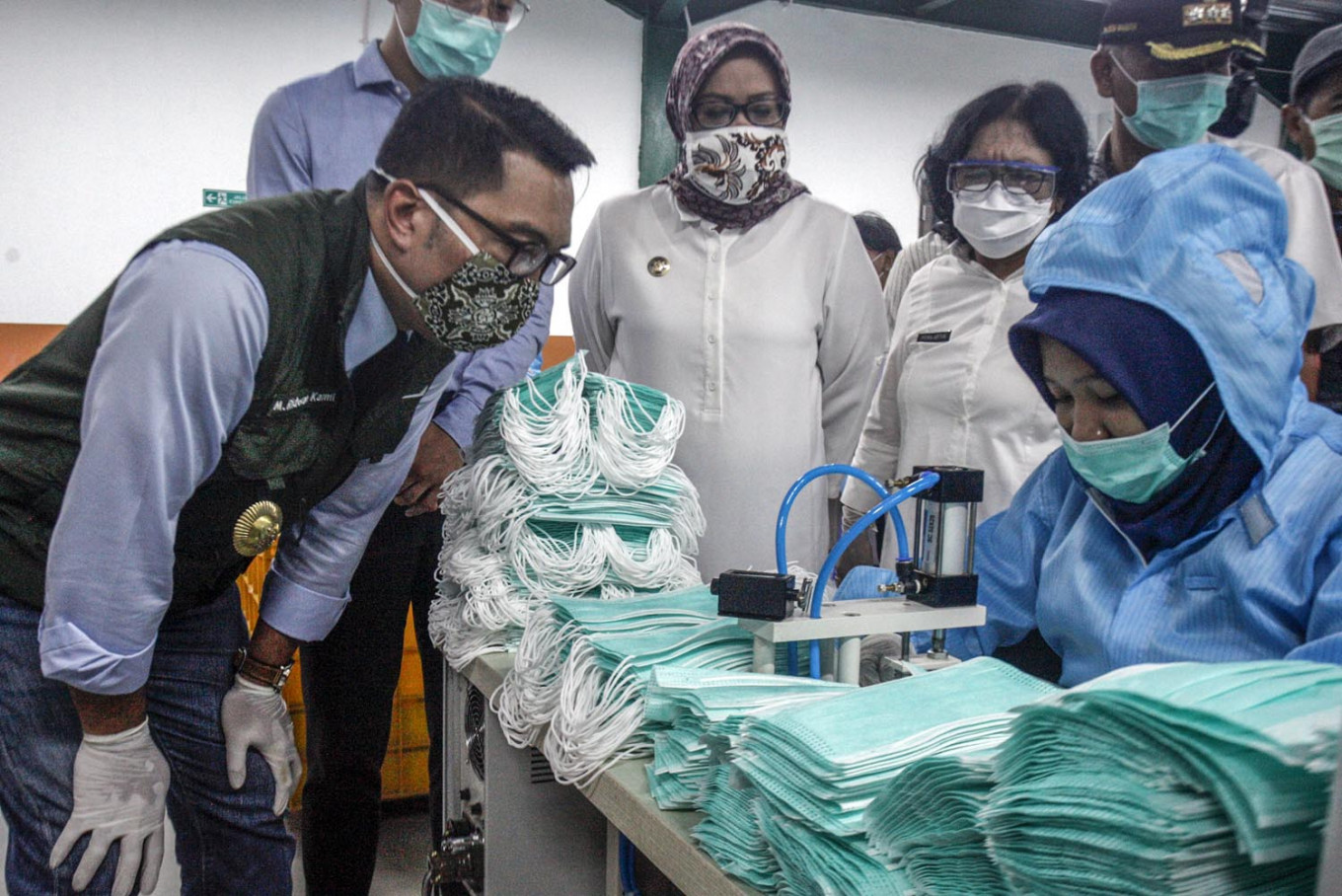Popular Reads
Top Results
Can't find what you're looking for?
View all search resultsPopular Reads
Top Results
Can't find what you're looking for?
View all search resultsWest Java to ease restrictions amid signs of decline in new COVID-19 cases
As many as 395 districts in West Java have reported no new cases of the coronavirus in the last few days, West Java Governor Ridwan Kamil said
Change text size
Gift Premium Articles
to Anyone
T
he provincial administration of West Java is considering gradually lifting the large-scale social restrictions in parts of the province considered safe in order to allow the economy to recover faster.
West Java Governor Ridwan Kamil said Wednesday that as many as 395 districts, accounting for 63 percent of all districts in the province, had reported no new cases of the coronavirus in the last few days.
“The good news is that we are going to reopen the economy in the relatively safe 63 percent of districts,” the former Bandung mayor said in an online talk on Wednesday. “Since it is district-based, we are going to assess which districts will continue to apply the large-scale social restrictions and which ones can return to normal life with a new protocol.”
West Java, the third-hardest-hit province with 1,545 confirmed cases, has used a five-level alert system to determine the relative safety of a district, with Level 5 being the most severe. The governor said the 395 districts were expected to qualify for a Level 2 status “in the near future”, at which point schools and shops would be allowed to open while implementing social distancing.
With the number of confirmed cases showing a declining trend in terms of a three-day moving average and actual reproductive number of the infection, called Rt, the West Java administration is seeking to quickly lighten the economic hardship confronting its residents, especially the poorest.
The West Java provincial government has allocated more than Rp 11.8 trillion (US$798 million) to its coronavirus mitigation programs, which include the distribution of social assistance to about 1.8 million eligible households.
“We are now moving from health emergency to economic emergency,” said Ridwan. “If we act now, a recovery will probably take place in 2021 and a return to normalcy in 2022.”
While the pandemic is still unfolding, the percentage of residents living below the poverty line in West Java is projected to go up to between 7.2 and 9.3 percent by the end of this year, according to Asep Suryahadi, a senior research fellow at SMERU Research Institute, which specializes in poverty.
With regional economic growth projected to slow to an annual rate of 0.2 percent in the worse-case scenario, household spending is estimated to fall nearly 5 percent this year. From January to March, the share of household spending, the primary driver of West Java’s economy, in the quarterly growth was down by 1.21 percentage points.
“The impact is greater on poor households than on middle-class and rich households,” Asep, who holds a doctorate in Economics from the Australian National University (ANU), said in the same online talk.
Despite the increasing number of poor residents, Asep estimated only a slight increase in inequality. The Gini ratio, the most common measurement of inequality based on income distribution with zero indicating perfect equality, is projected to increase to 0.413 this year from 0.401 in 2019 in the worse-case scenario.
The projected rise in poverty is in line with the number of job losses as a consequence of the social restrictions that force businesses to temporarily shut factories. By mid-April, West Java reported that 15,960 companies either laid off or furloughed 165,559 formal workers, accounting for 11 percent of the national tally, according to data from the Manpower Ministry.
The government actually allows essential workers aged below 45, who are considered less vulnerable to the virus, to keep working to prevent higher unemployment.
However, the number of infected people aged between 15 and 45 rose to 2,000 by March 2021 even with a slower transmission rate, said Panji Hadisoemarto, an epidemiologist from Padjajaran University.
“We need to think not only about the risk by the age group of workers in a given sector, but also infection risk in that sector as a whole,” Panji said in the same online talk. “COVID-19 transmission in West Java has declined, but it is still far from what I consider safe.”










